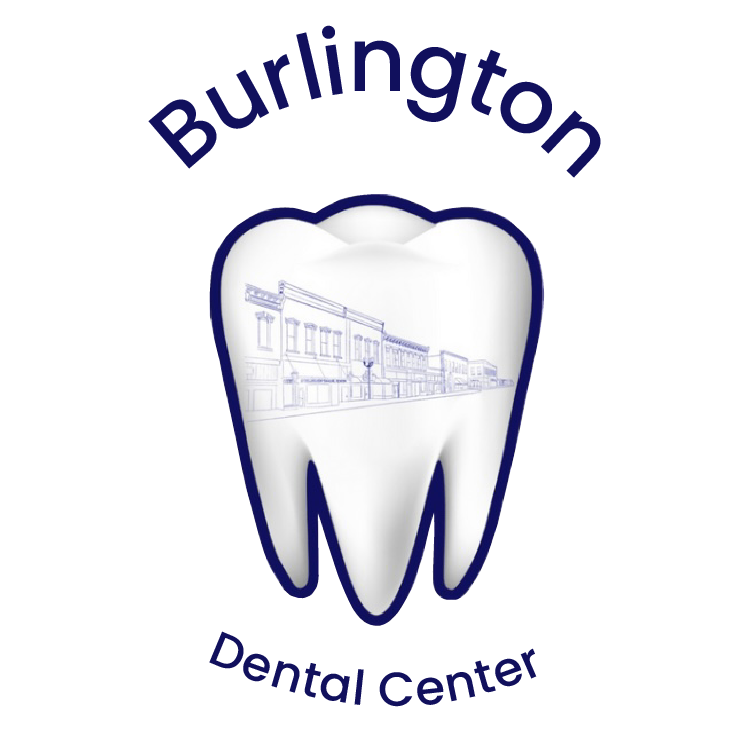Cracked teeth are a common dental problem, impacting individuals of all ages.
These cracks can range from minor cosmetic issues to severe structural damage, each with its own set of implications for oral health.
In this article, we'll look at the various types of cracked teeth, their causes, symptoms, and effective treatment options. Understanding the diverse nature of tooth cracks is crucial for maintaining optimal dental health and making informed decisions about treatment.
Quick Summary: Types of Cracked Teeth & How to Treat
Cracked teeth, varying from minor craze lines to severe split roots, require different treatments based on the type and severity of the crack.
Symptoms can range from no discomfort to significant pain and sensitivity.
Treatment options range from “do nothing” to invasive treatments like veneers, crowns, root canals, and implants.
Preventative measures, regular dental check-ups, and proper oral hygiene are key to avoiding cracks.
Understanding the Different Types of Cracked Teeth
Cracked teeth can manifest in several forms, each with distinct characteristics and implications:
Craze Lines: These are fine, hairline fractures on the enamel's surface, often seen in adult front teeth. While they typically don't cause pain, they can affect the aesthetics of your smile.
Fractured Cusp: Occurs when a portion of the tooth's chewing surface breaks off, often due to decay or heavy biting forces. This type of fracture may cause discomfort but is less likely to damage the tooth's pulp.
Cracked Tooth: This involves a crack that begins at the tooth's surface and extends toward the root. Depending on its depth, it can cause significant discomfort and may risk the health of the tooth's pulp.
Split Root: A progression of a cracked tooth where the crack deepens, resulting in the tooth being divided into distinct segments or halves. This usually necessitates tooth extraction.
Vertical Root Fracture: Begins at the root and extends towards the tooth's surface, often remaining unnoticed until it causes infection or pain. Such fractures are challenging to treat and almost always lead to tooth extraction.
Although the guide was intended for dental providers, the American Association of Endodontists published a pamphlet which is great for understanding these different types and their impact on dental health.
Causes & Risk Factors for Cracked Teeth
Cracked teeth can result from various factors:
Chewing Hard Foods: Biting down on hard objects like ice, nuts, or candy can cause teeth to crack.
Trauma: Accidents, sports injuries, or sudden impacts can lead to tooth fractures.
Teeth Grinding (Bruxism): Chronic grinding or clenching exerts excessive pressure on teeth, leading to cracks.
Age: Teeth become more susceptible to cracks as we age, particularly after age 50.
Dental Procedures: Certain procedures, like root canals or large silver fillings, can weaken teeth, making them more prone to cracks.
Lifestyle Habits: Habits like chewing on pens or toothpicks can increase the risk of cracked teeth.
Understanding these causes and risk factors is helpful in preventing tooth cracks and ensuring timely treatment.
Symptoms & Diagnosis
Symptoms of cracked teeth vary depending on the type and severity of the crack:
Craze Lines: Usually asymptomatic; primary concern is cosmetic.
Fractured Cusp: May cause minor discomfort, especially when chewing, or sensitivity to temperature changes.
Cracked Tooth: Symptoms can include sharp pain when biting, sensitivity to hot and cold, and possible gum swelling.
Split Root: Intense pain, especially when chewing, and possible infection or abscess formation.
Vertical Root Fracture: Often unnoticed until infection occurs; symptoms include pain, swelling, and discomfort around the gum line.
The diagnosis of cracked teeth typically involves a dental examination, where the dentist will look for visible signs of cracks and assess symptoms. Special dental imaging, like X-rays or possibly a 3D cone-beam CT scan, may be used to detect less obvious fractures, especially those below the gum line.
Treatment Options for Each Type of Crack
The treatment for a cracked tooth depends on the type, location, and severity of the crack:
Craze Lines: Cosmetic treatments like veneers can hide these superficial cracks. Unless cosmetics are a major concern, the best treatment option is to do nothing — the tooth is healthy and unharmed despite the craze lines.
Fractured Cusp: Often treated with dental crowns to protect the remaining tooth structure or fillings if the break is small.
Cracked Tooth: Treatment might involve a dental crown to hold the tooth together. If the pulp is affected, a root canal may be necessary.
Split Root: Usually, the tooth cannot be saved and requires extraction, followed by tooth replacement options like a dental implant or bridge.
Vertical Root Fracture: Often leads to extraction; if diagnosed early, a part of the tooth might be saved with endodontic surgery.
Preventive Measures & Oral Care
Preventing tooth cracks involves a combination of lifestyle changes and oral care practices:
Avoid Hard Foods: Steer clear of chewing on hard candies, ice, or other hard objects.
Wear Mouthguards: Particularly during sports or if you grind your teeth at night.
Regular Dental Check-Ups: Routine visits can help detect early signs of cracks or conditions that may lead to cracking.
Proper Oral Hygiene: Regular brushing and flossing can keep your teeth strong and healthy.
Manage Bruxism: If you grind your teeth, discuss with your dentist about getting a nightguard to protect your teeth.
Compliance with Recommended Treatment: A common cause of cracked teeth is a delay or refusal to get a crown on a tooth following root canal treatment. Once a tooth has been weakened by a root canal, a crown is usually required to reduce the risk of fracture.
Incorporating these measures into your daily routine can significantly reduce the risk of developing cracked teeth and maintain overall oral health.
The Role of Dental Professionals
Seeking professional dental care is crucial for properly managing cracked teeth. The type of dental professional involved typically depends on the nature of the crack:
General Dentists: Often the first point of contact, they can diagnose and treat minor cracks, such as craze lines and fractured cusps.
Endodontists: Specialists in treating issues inside the tooth, including root canals, which may be necessary for more severe cracks reaching the tooth pulp.
Oral Surgeons: Involved in cases requiring tooth extraction, such as split roots or vertical root fractures, and in subsequent tooth replacement procedures like dental implants.
Each type of dental professional plays a specific role in ensuring comprehensive care for patients with cracked teeth, from initial diagnosis to advanced treatments.
Long-Term Management & Prognosis
The long-term management of cracked teeth involves regular dental check-ups to monitor the condition and effectiveness of treatments.
Follow-Up Care: Regular visits to assess the treated tooth and adjacent teeth for signs of further cracking or complications.
Prognosis: Varies based on the crack type. For instance, treated craze lines and fractured cusps generally have a good prognosis with proper care, while more severe cracks like split roots often lead to tooth loss.
Patient compliance with oral hygiene and adherence to follow-up care significantly influences the long-term outcomes of cracked teeth.
Financial Considerations & Insurance Coverage
The cost of treating cracked teeth can vary widely based on the type of crack and required treatment. Patients should consider:
Treatment Costs: These can range from minimal for simple cosmetic fixes to significant for extensive procedures like root canals or implants.
Insurance Coverage: Many dental insurance plans cover a portion of the costs for restorative procedures like crowns or root canals but may not cover cosmetic treatments. It's crucial to review your insurance policy to understand what's covered.
Affordable Care Options: For those without insurance or facing high out-of-pocket costs, look into payment plans, dental discount programs, or services at dental schools which can offer more affordable rates.
Understanding these financial aspects can help patients make informed decisions about their dental care and manage the costs associated with treating cracked teeth effectively.
Final Thoughts
Understanding and appropriately treating cracked teeth is vital for maintaining oral health. The type of crack, from superficial craze lines to more severe split roots, dictates the treatment required.
Early diagnosis and intervention by dental professionals can prevent complications and preserve the tooth's integrity. Regular dental visits, combined with good oral care practices, are essential in preventing tooth cracks and ensuring the longevity of your teeth.
If you suspect a cracked tooth, consult with your dentist for a tailored treatment plan and to discuss long-term management strategies.
FAQs
Can you fix cracked teeth?
Yes, cracked teeth can often be fixed. However, the treatment depends on the type, location, and severity of the crack. Options include bonding, veneers, crowns, root canals, and in severe cases, extraction followed by dental implants or bridges.
Are cracks in teeth serious?
It varies. Minor cracks like craze lines are usually not serious and more of a cosmetic concern. However, deeper cracks can lead to serious issues like infection, severe pain, and tooth loss if not treated promptly.
Can a cracked tooth be saved?
Many cracked teeth can be saved with appropriate treatment, such as a crown or root canal. The feasibility of saving a cracked tooth depends on the extent and location of the crack. We would love to give a definitive answer to this question, but it truly depends on the extent of the crack.
Is it OK to leave a cracked tooth?
It's not advisable to leave a cracked tooth untreated. Even if it's not causing discomfort, a crack can worsen over time, usually leading to pain, infection, and potentially more complex treatments.
How long can I go with a cracked tooth?
It's best to seek dental care as soon as possible. Delaying treatment can worsen the condition of the tooth, increase the risk of infection, and potentially complicate treatment. Most cracked teeth will eventually abscess if not treated.
How long before a cracked tooth becomes infected?
The time it takes for a cracked tooth to become infected varies. If the crack exposes the tooth's pulp, bacteria can enter and cause infection relatively quickly — perhaps weeks or months. Seeking prompt dental care is crucial.
Why does my cracked tooth not hurt?
Not all cracked teeth cause pain. If the crack hasn't reached the pulp where the nerves are located, you might not experience discomfort. However, it's still important to get it checked by a dentist.
* Though the author of this post is a licensed dentist in the state of Kansas, this information is provided for informational and educational purposes only. Please use your best judgment and contact emergency medical services in the event of an emergency.




